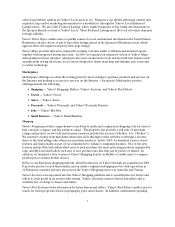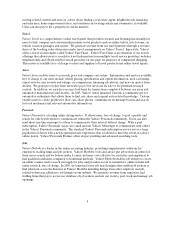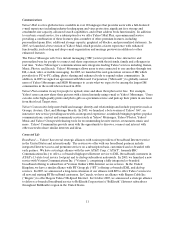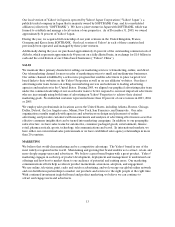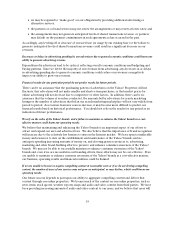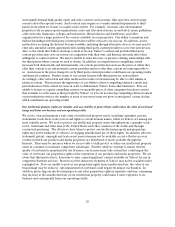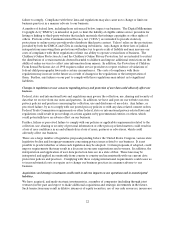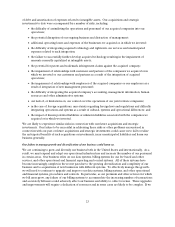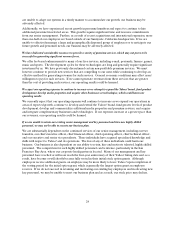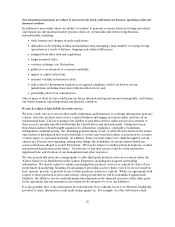Yahoo 2005 Annual Report Download - page 22
Download and view the complete annual report
Please find page 22 of the 2005 Yahoo annual report below. You can navigate through the pages in the report by either clicking on the pages listed below, or by using the keyword search tool below to find specific information within the annual report.16
Item 1A. Risk Factors
We face significant competition from large-scale Internet content, product and service aggregators, principally
Time Warner’s AOL, Google and Microsoft.
We face significant competition from companies, principally AOL, Google, and Microsoft, that have
aggregated a variety of Internet products, services and content in a manner similar to Yahoo!. AOL has
access to content from Time Warner’s movie, television, music, book, periodical, news, sports and other
media holdings; access to a network of cable and other broadband users and delivery technologies; and
considerable resources for future growth and expansion. Google, in addition to an Internet search service,
offers many other services that directly compete with our services, including a consumer e-mail service,
desktop search, local search, instant messaging, photos, maps, shopping services and advertising solutions.
Microsoft has introduced its own Internet search service and has announced plans to develop both paid
search and features that may make Internet searching capabilities a more integrated part of its Windows
operating system. We expect these competitors increasingly to use their financial and engineering
resources to compete with us, individually, and potentially in combination with each other. In certain of
these cases, most notably AOL, our competition has a direct billing relationship with a greater number of
their users through Internet access and other services than we have with our users through our premium
services. This relationship may permit these competitors to be more effective than us in targeting services
and advertisements to the specific preferences of their users thereby giving them a competitive advantage.
If our competitors are more successful than we are in developing compelling products or attracting and
retaining users or advertisers, then our revenues and growth rates could decline.
We also face competition from other Internet service companies, including Internet access providers, device
manufacturers offering online services and destination websites.
Our users must access our services through Internet access providers, including wireless providers and
providers of cable and broadband Internet access. To the extent that an access provider or device
manufacturer offers online services competitive with those of Yahoo!, the user may elect to use the
services or properties of that access provider or manufacturer. In addition, the access provider or
manufacturer may make it difficult to access our services by not listing them in the access provider’s or
manufacturer’s own directory or by providing Yahoo! with less prominent listings than the access provider,
manufacturer, or a competitor’s offerings. Such access providers and manufacturers may prove better able
to target services and advertisements to the preferences of their users. If such access providers and device
manufacturers are more successful than we are in developing compelling products or attracting and
retaining customers, users or advertisers, then our revenues could decline. Further, to the extent that
Internet access providers, mobile service providers or network providers increase the costs of service to
users or restrict Yahoo!’s ability to deliver products, services and content to end users or increase our costs
of doing so, our revenues could decline.
We also compete for customers, users and advertisers with many other providers of online services,
including destination websites. Some of these competitors may have more expertise in a particular
segment of the market, and within such segment, have longer operating histories, larger advertiser or user
bases, and more brand recognition or technological features than we offer.
In the future, competitors may acquire additional competitive offerings or consolidate with each other to
become more competitive, and new competitors may enter the market. If our competitors are more
successful than we are in developing compelling products or attracting and retaining users, advertisers or
customers, then our revenues and growth rates could decline.



